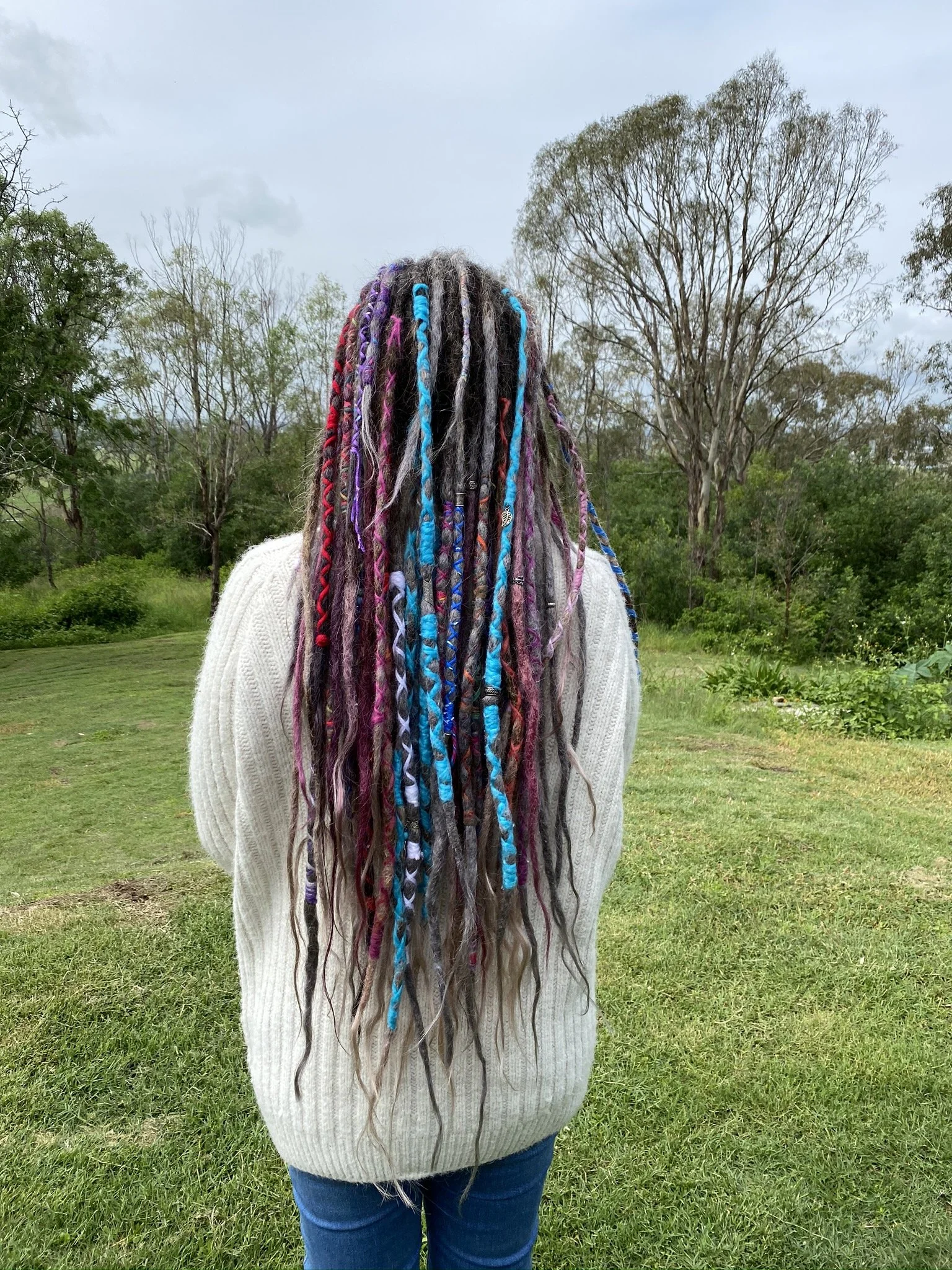What are dreadlocks
When you think about getting dreadlocks, it is both a journey and a process. Dreadlocks develop through four phases, from loose locks to structured, mature dreadlocks:
1. Baby Dreadlocks:
The first steps in the dreadlock journey are known as "Baby Dreadlocks." These newly formed dreads are loose, airy, and have yet to begin their true dreadlock process. This is why they are called baby dreads. At this stage, it's completely normal to experience loose hairs, which require regular attention and tightening. It’s a good idea to be patient and invest time in caring for them yourself or consider professional tightening at a dreadlock salon. You may need more maintenance during this stage.
2. Young Dreadlocks:
After a few months of regular tightening and care, your dreadlocks move into the "Young Dreadlocks" phase. They begin to secure themselves in their new position, and although there may still be loose hairs to manage, this gradually decreases. With the help of palm rolling and tightening products, they start to feel firmer and take shape. Keep up with the palm rolling it will pay off I promise.
3. Teenage Dreadlocks:
After about six months, your dreadlocks enter the teenage phase. They become firmer and may appear slightly shorter. It’s crucial to roll and stretch them after washing to avoid unwanted shrinkage and bumps. While there may still be some loose hair, this will gradually decrease, and what remains will primarily be new growth at the roots.
4. Mature Dreadlocks:
After about a year, your dreadlocks finally reach the maturity phase. They are now firm, require less maintenance, and have gone through all the stages. There will still be a few loose hairs, mainly at the roots where new hair grows. It is recommended to repair the roots approximately every three months to maintain their beauty and prevent the dreadlocks from merging at the scalp. You will no longer need as many products as in the beginning, but it is still important to use a good dreadlock only shampoo to keep your scalp and hair healthy.
It does take time to develp dreadlocks, be very patient. The use of headbands can help with the fuzzy hair, I do have a range of these in stock, as well as some shampoos and acclerator- (those who are having new dreads may like to use that).
This site is brilliant in answering so many questions you may have about dreadlocks, what shampoo should I use? what if I get headlice and so on: RAW ROOTs
Contact Me
Interested in getting some dread work done. Fill out some info and I will be in touch shortly. I can’t wait to hear from you!

